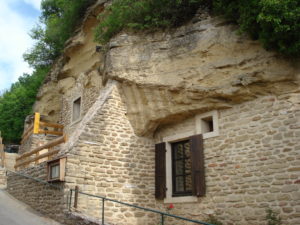 Although this year’s winter break seemed especially short, I managed to fit in some wonderful family time and a short but fabulous visit to California. Coming home to Missouri’s sub-zero temperatures last night was rough after three days of sunny San Diego! Fortunately, I had a good excuse not to leave the house–a major overhaul of my French 3 health unit.
Although this year’s winter break seemed especially short, I managed to fit in some wonderful family time and a short but fabulous visit to California. Coming home to Missouri’s sub-zero temperatures last night was rough after three days of sunny San Diego! Fortunately, I had a good excuse not to leave the house–a major overhaul of my French 3 health unit.
Since I’ll be starting this unit on January 3rd, I decided to include some aspects of project-based learning by having the students choose a health-related resolution, create an action plan for reaching their goal, and then discuss and document their progress. I’m hoping that this opportunity for choice and voice will engage these students during our first few days back to school. As they continue working on their personal goals outside of class, they’ll work in small groups to research and present cultural comparisons on health-related topics during class time. For the remainder of the unit, I’ll repeat some of last year’s lessons about the flu and the Petit Nicolas story, “Je suis malade.” Click here (New link added 5/25/18) for an agenda of the new lessons to which all resources have been linked.
Day 1: The students will select the health-related resolution they find most relevant and then take an online quiz to give them some baseline data on the aspect of well-being they have chosen. Lastly, they’ll discuss their resolutions with a classmate who has chosen the same goal. (I’ll seat them with students who have chosen the same resolution for the remainder of this unit)
Day 2: The students will read an infographic or short article regarding the aspect of wellness they’ve chosen to focus on and fill in a graphic organizer to show what they learned. They will then discuss their information with a partner who read a different text on the same topic, adding additional information to the graphic organizer. Lastly, they will write a discussion post on Schoology (our learning management system) in which they share their resolution and reasons for choosing it. They’ll also respond to the posts of two classmates
Day 3: In order to gather additional information about their health-related goals, the students will watch a video on their topic and fill in the main ideas and supporting details that they understood. They will then discuss their information with a partner who watched a similar video and fill in a second graphic organizer. Finally they’ll write a SUPER goal. (My attempt at modifying a SMART goal to make it work in French!)
Day 4: Students will write the action steps they believe will help them meet their goal, based on the articles they have read, the videos they have watched and the discussions they have had with a partner. They will then discuss their action steps with a partner and note the information their partner gives them. For “homework” the students will begin implementing some of the action steps they have chosen.
Day 5: The students will begin this class period by interviewing their partner about how the first day’s action steps went and noting his/her responses. Next, they will individually annotate an infographic about French health concerns in order to prepare them for the cultural comparison project to follow. They will continue working on their action steps outside of class.
Day 6: The students will first write a post on a Schoology discussion board in which they discuss their previous day’s success/failure in completing their action steps toward their well-being goal. I will stop everyone after 15 minutes and give them 10 minutes to respond to two classmates’ posts. Next they will participate in a guided discussion of the previous day’s infographic with a partner. For homework they will continue to work on action steps for their goal.
Day 7: The students will begin by discussing their progress using the same format as Day 5. I will then assign an aspect of health from the infographic to each group. The students will then research this topic as it related to both Americans and French and fill in a table with relevant information. For homework they will continue working on their action steps.
Day 8: The students will first write a new post on a Schoology discussion board to describe their previous day’s progress toward their health goal. They will then discuss the information they gleaned from their research and fill in a graphic organizer with cultural comparisons related to the aspect of health that was assigned to their group. They will spend any remaining time in the class period responding to discussion posts and will continue working toward their health goals as homework.
Day 9: After discussing their progress on their health goals, the students will work in small groups to create a Google Slides presentation to support the following day’s oral presentations on the health cultural comparison they researched. They’ll continue working on their health goals that evening.
Day 10: The students will rehearse and then present their cultural comparisons in small groups as the audience takes notes. After the presentations, I will give a short (open-note) true/false quiz over the information that has been presented.
Day 11: For the summative writing task for this portion of the unit, the students will write a blog post documenting their success or failure meeting their well-being goal. While they are writing, I will call up pairs of students (from different groups) and have them discuss their achievement (or lack thereof) of their goals as an interpersonal summative task.
Day 12: Having completed the personalized health goal project, as well as the cultural comparison presentations, I will prepare the students for reading “Je suis malade” with a pair of lessons related to the flu. On this first day, we will take a quiz about the flu as a class and then the students will discuss a cartoon in small groups. Next, the students will complete a pair of activities in which they discuss information in infographics about colds and flu. Finally, they will complete an Edpuzzle about the flu. Teaching kids about how to protect themselves during flu season with things such as a face mask, disposable gloves, and non-touch techniques can make them understand their actions and implications during these times.
Day 13: In this lesson the students will individually complete an interpretive activity that will serve as the summative reading task for this unit. They will also watch a second video about the flu and complete a comprehension guide.
Days 14 – 21: At this point in the unit I will resume last year’s unit (beginning with Day 10). Thus the students will read the Petit Nicolas story, “Je suis malade,” and complete a series of learning activities and performance assessments related this text.
While I approached the design of this unit differently than I usually do, I’m looking forward to seeing how my students do with the project-based lessons I’ve prepared to introduce this topic.
Bonne Année!
Note: 1/12/18: I found a song that was a great fit with this unit. Click here for the document that I created.








